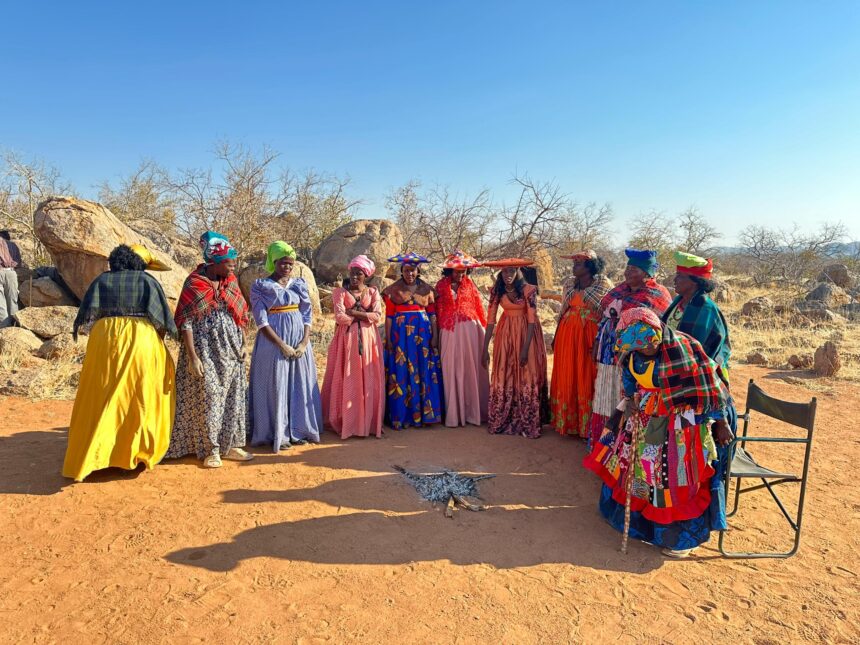OTJOKAVARE – Modern ways of living, coupled with the practice of religion and the shift from rural to urban life, are some of the concerns that seem to hamper interest in culture.
This is according to Joseph Muzuma (71), who occasionally and voluntarily lives at the Ovaherero Living Museum in Kunene region.
Muzuma educates locals and visitors to the area about the Ovaherero culture, traditions, customs and way of life.
“I have noticed that in many instances, the way of life, religion and modern times have heavily impacted and sidelined the role tradition plays in society,” he said while calmly seated on a chair as he welcomed journalists to the museum.
Situated in the mighty Kunene region, the living museum has occasional inhabitants on site only when tourists communicate with the organising team that they require a tour.
The museum is one of the tourism establishments that are financially supported by the Deutsche Gesellschaft für Internationale Zusammenarbeit (GIZ) GmbH-funded bioeconomy project.
GIZ has been working in Namibia since 1990, and opened an office in Windhoek in 1994.
The GIZ took the local media on a tour of its projects, including the living cultural museum, to give them a glimpse of the significance of the village.
The media saw the performances in the form of a chanting called ombimbi – a dance performed at funerals and weddings called outjina and the making of mealie meal from maize and fermented buttermilk (omaze uozongombe) from cow milk.
The septuagenarian said it is important for young Otjiherero-speaking Namibians to stay true to their roots, and acquaint themselves with all cultural activities.
“There are a lot of people keeping tradition alive, and it seems the only ones sticking to it now are the elderly. The young ones are caught up with the current times and civilisation. The way of life has drastically changed, and there is no more respect,” he stated.
Vetouojao Tjauira, the supervisor of the cultural museum said before setting up the site, they were given a tour of other living museums like those of the Damara and OvaHimba.
“We noticed that they are getting money for operating the museums, and GIZ motivated us to do the same. For tourism, this is an ideal spot because of its vicinity to the Etosha National Park,” he said.
He added: “Our children are in cities, and lack the knowledge of culture and traditions. That is the purpose of such a place, to teach them how to behave and follow norms of the Ovaherero people”.
Tjauira said talks on setting up the site had been ongoing for the past four years, until they came to fruition this year.
“The place has potential, and to keep this place alive, we need to get a borehole for access to water. We need to start initiatives like hosting weddings and slaughtering animals, and teaching visitors how we do things,” he stated.
The museum comprises traditional huts made from sticks, thatch and plastered with cow dung, a kraal, a cooking area and others that will be built with time. More funds are needed for these plans to be realised.
“People from the surrounding areas are the ones coming here. So, it’s random volunteers, some from Otjokavare, Otjopaue, Otjovasiona and other nearby villages. If we get things like a craft shop to sell handmade crafts and the installation of solar power, then these people would not need to move up and down, and can settle here,” said the optimistic tour guide.


